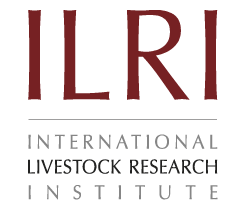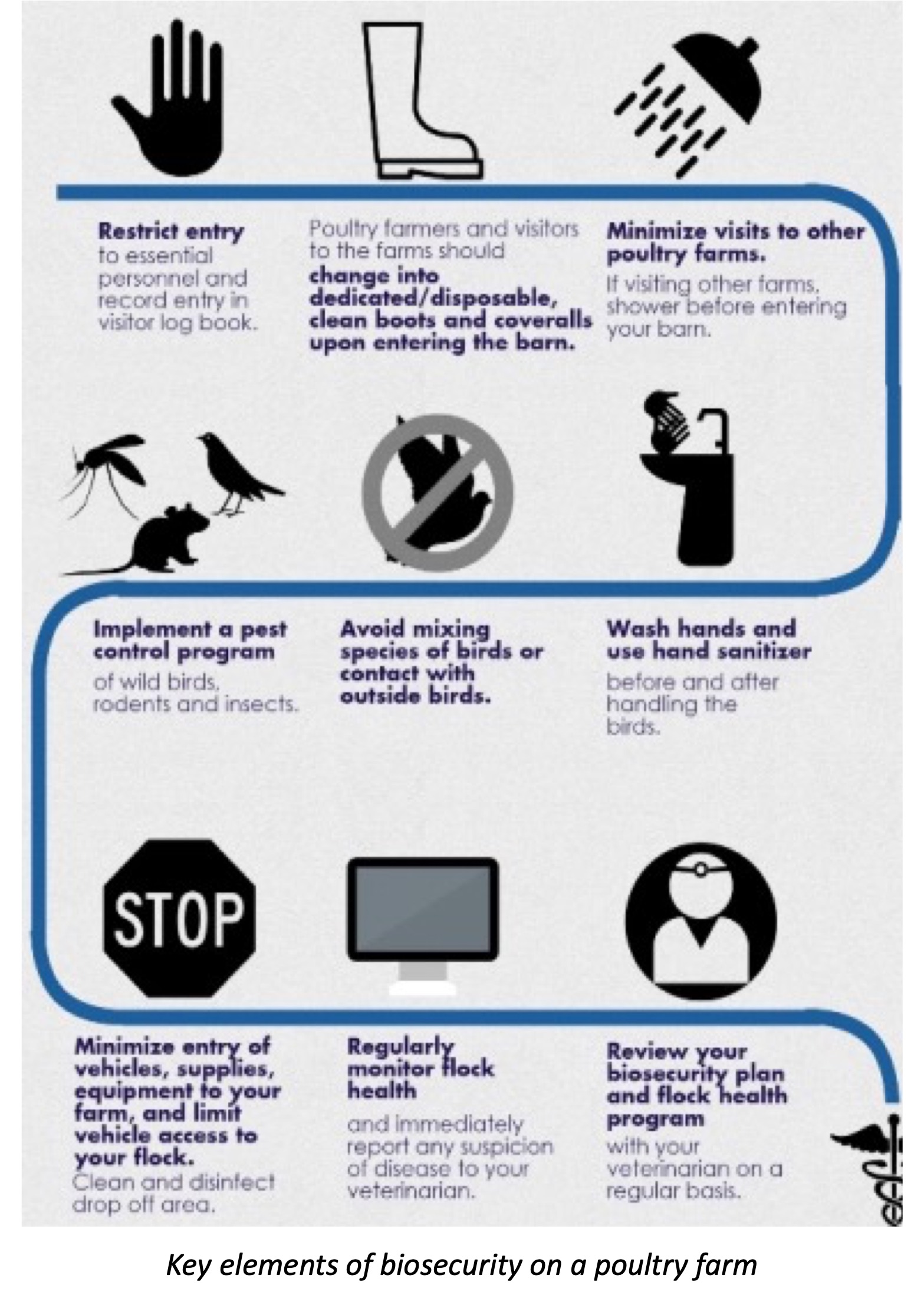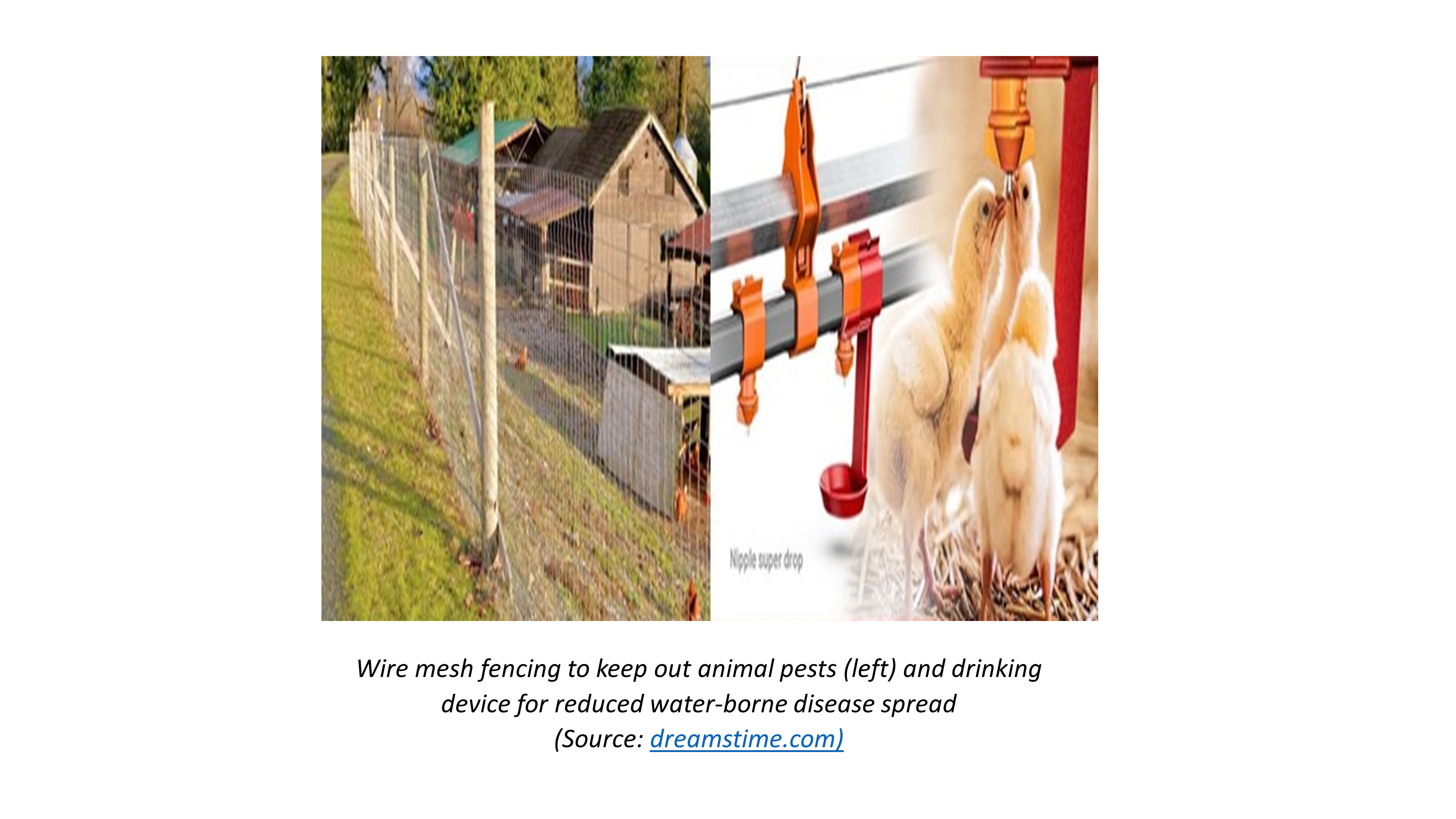Biosecurity for Disease Prevention
Summary
Due to the large number of poultry and concentration in flocks it is imperative that producers put in place precautionary measures to prevent the introduction and spread of disease-causing organisms. Biosecurity consists of a bundle of preventative disease control measures practiced by poultry producers. It reduces the risk of disease agents moving onto farms from outside, the movement of diseases within same farm, and carryover of disease agents between different flocks on a farm. Diseases may lead to mass culling of a flock or even an entire farm, thus justifying the cost of attention to fundamental strategies that prevent transmission of pathogens in the farms. The effectiveness of a biosecurity program can be optimized by regional participation since the practices are more effective if all poultry producers apply them.
About the Solution
Biosecurity involves a set of practices and strategies that are guided by the design and day-to-day management of poultry production units. Its three main elements are isolation, traffic control and sanitation. Poultry farmers and workers benefit from training on the importance of biosecurity measures for their personal health and profitability of the business. Diligent surveillance is key for early detection which can greatly reduce the impact and spread of disease to other flocks. Poor biosecurity standards can undermine vaccination and medication, and good flock and feed management practices.
Precautionary measures against diseases are required in every part of the poultry value chain from breeding centers, hatcheries, brooding units, layer and broiler farms to feed blending and processing factories.
Biosecurity measures protect against a wide range of pathogens, incl. Newcastle disease, Avian cholera, Marek’s disease, Salmonella, Coccidiosis, Mycoplasmosis, Colibacillus, and Avian Influenza, some of them also posing a threat to humans.
Poultry houses should be located away from heavily populated human settlements, and other animal production systems. Every poultry operation should have an isolated area for the treatment of sick chickens until their full recovery. Newly acquired birds should be quarantined for fourteen days and vaccinated before being introduced into the main flock. Workers must always wear boots, overcoats, gloves, and face masks, and these must be regularly disinfected. Each poultry house should have a footbath at the entrance with a strong cleaning solution. Facilities for feed storage and processing birds should be located 30m to 50m away from production houses. Vehicles entering the premises have to drive through a water sanitation pan. Poultry manure is to be kept at least 20m away from production units. Infected chickens must be burnt or buried off site. Fencing of premises with mesh wire helps to keep out rodents, wild birds, and domesticated animals that carry diseases.
Commercialization
Commercially available
Solution Images
Institutions



